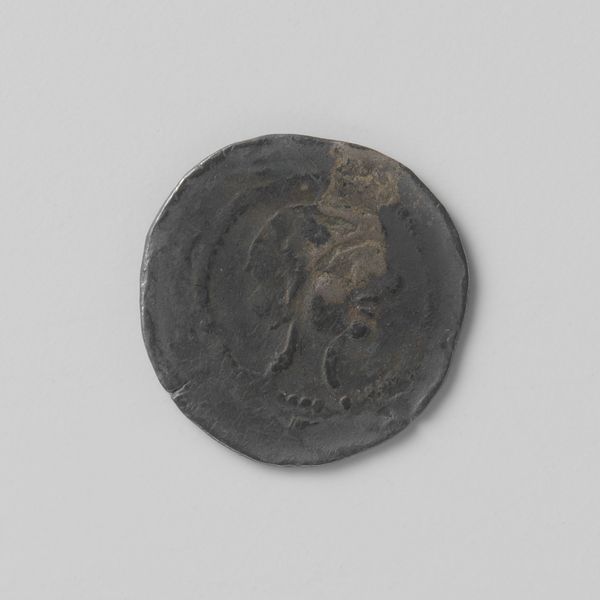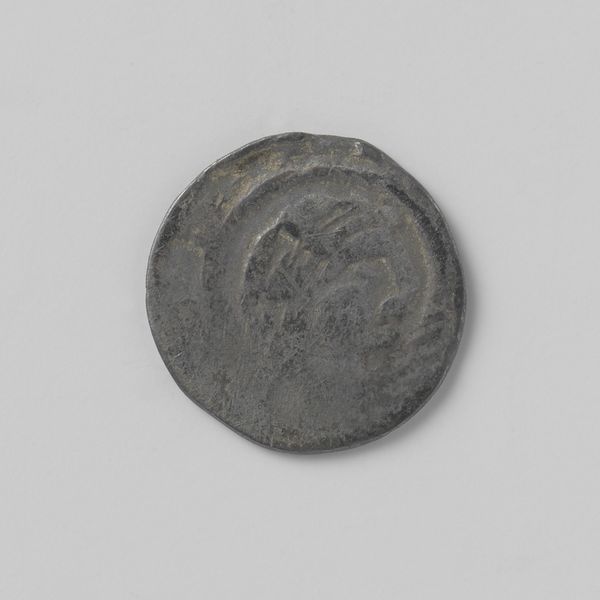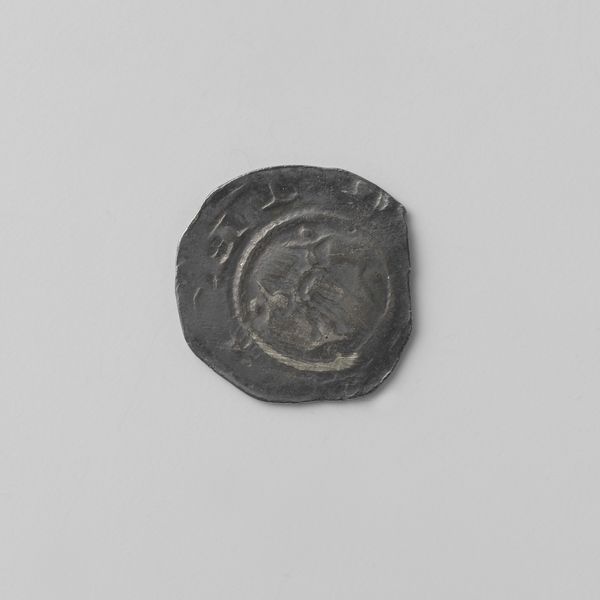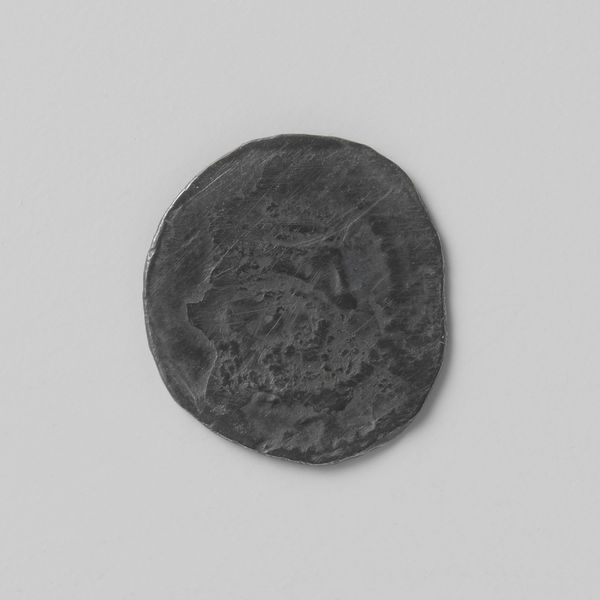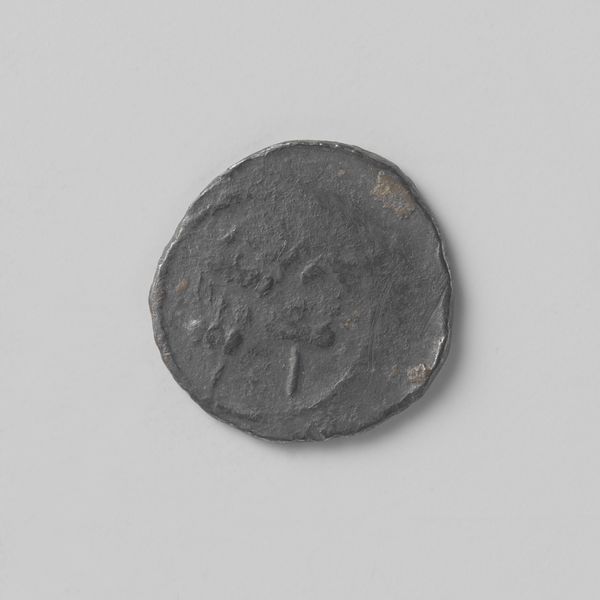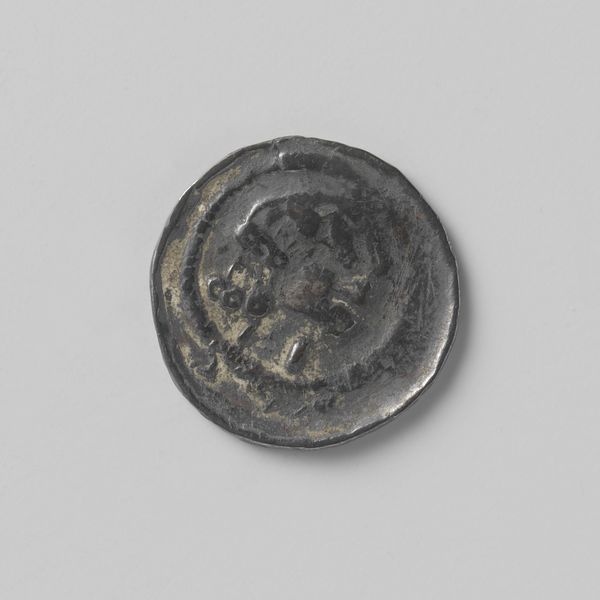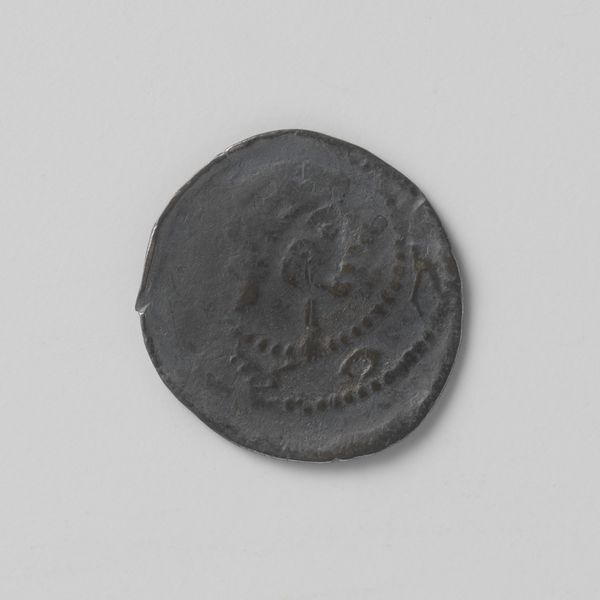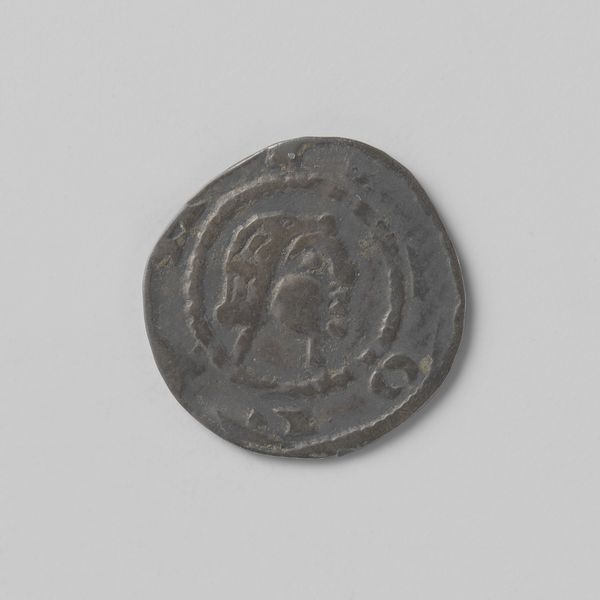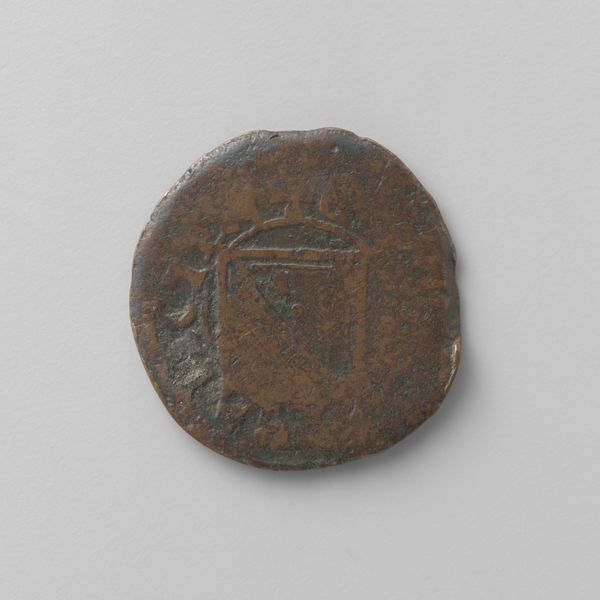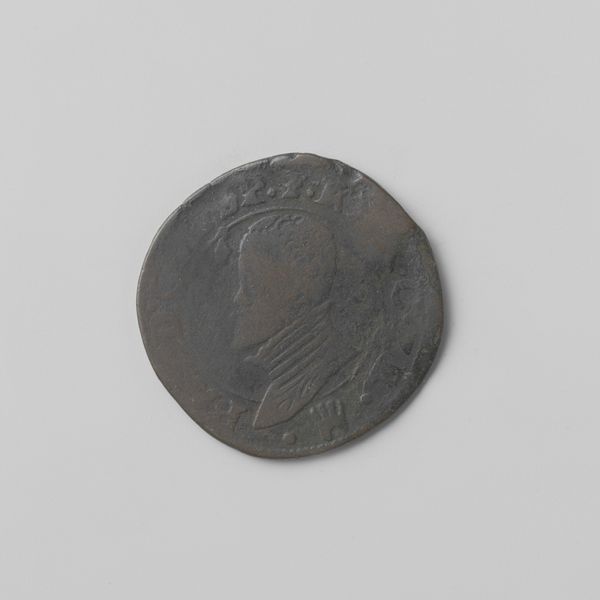
metal, relief
#
portrait
#
medieval
#
metal
#
relief
#
ancient-mediterranean
#
islamic-art
Dimensions: diameter 1.2 cm, weight 0.35 gr
Copyright: Rijks Museum: Open Domain
Curator: This is a Dutch penny dating from 1222 to 1234, a small metal relief featuring Floris IV, Count of Holland. Editor: It has such a somber, almost ghostly quality, doesn't it? The metal is worn, giving it an air of antiquity and… impermanence. It looks incredibly tactile despite the flat image. Curator: Absolutely. Though small in scale, the coin was an incredibly important symbolic tool. The image of Floris IV wasn’t just a portrait. The figure projected power and legitimacy. It was a little billboard of authority circulating within the medieval world. Editor: It's interesting how the design blends secular and perhaps religious ideas. I mean, look at how the figure is rendered: the iconic profile evokes classical coin imagery but the overall aesthetic aligns more with early medieval art. One wonders how the visual language shaped perceptions of Floris's rule. Curator: Precisely. Medieval coinage was fascinating. Because most people were illiterate, rulers depended on visual communication to convey their authority. It speaks to the medieval reliance on images to negotiate socio-political realities. A medieval penny isn't simply a form of payment; it is propaganda in its purest form. Editor: Thinking about its original context, passed from hand to hand, worn smooth by touch, each coin carrying this message of governance to ordinary people… I suppose that grounds the story, providing insight into the everyday lives of medieval Hollanders. It's more than art; it's lived history. Curator: That's a perspective I deeply appreciate. These kinds of pieces are a cultural looking glass reflecting collective memory across the ages. Thank you for spotlighting its broader significance beyond just the aesthetic. Editor: My pleasure. I think its melancholic weight, especially as such an ordinary item, continues to resonate profoundly.
Comments
No comments
Be the first to comment and join the conversation on the ultimate creative platform.
